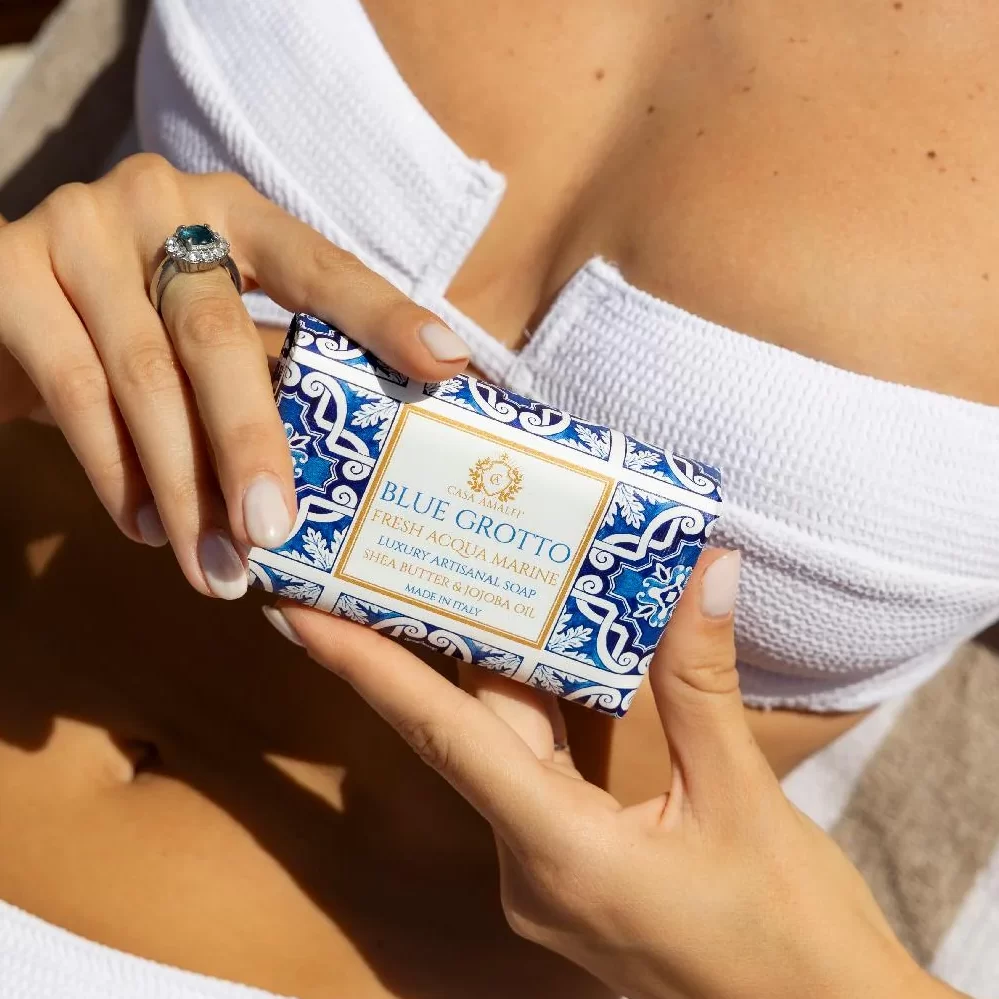Understanding the Basics of Body Soap
Body soap plays a crucial role in daily hygiene routines. It cleanses the skin of dirt, sweat, and bacteria. Effective body soaps maintain the skin’s natural balance. They remove impurities without stripping essential oils. Quality ingredients make a significant difference in soap performance. Some soaps focus on moisturizing dry skin. Others target specific skin concerns like acne or sensitivity. The market offers a wide variety of body soaps. Options range from traditional bar soaps to liquid body washes.
Natural and organic soaps have gained popularity in recent years. These products often use plant-based ingredients and essential oils. Synthetic soaps utilize lab-created components for specific benefits. Both types can effectively clean the skin when formulated properly. The pH level of soap affects its interaction with skin. Ideally, body soap should have a pH close to that of skin. This helps maintain the skin’s protective barrier. Harsh soaps can disrupt this balance, leading to dryness or irritation.
Gentle cleansing agents in modern soaps minimize this risk. Many body soaps now include additional skincare ingredients. These may include vitamins, antioxidants, or exfoliants. Such additions aim to provide benefits beyond basic cleansing. Understanding individual skin needs helps in choosing the right soap. Factors like skin type, climate, and lifestyle influence soap selection. Regular use of suitable body soap promotes overall skin health.
The History and Evolution of Body Soap
Soap has a long and fascinating history. Ancient Babylonians created the first known soap around 2800 BC. They used animal fats, wood ash, and water. Egyptians bathed regularly and used soap-like substances. The Romans developed more sophisticated soap-making techniques. During the Middle Ages, soap became a luxury item in Europe. Soap guilds controlled production, maintaining high standards. The industrial revolution made soap more accessible to the masses.
In 1791, Nicolas Leblanc patented a process for making soda ash. This development significantly lowered the cost of soap production. The 19th century saw major advancements in soap technology. William Shepphard patented liquid soap in 1865. B.J. Johnson developed Palmolive soap, introducing vegetable-based soaps. The early 20th century brought synthetic detergents into the market. These offered better performance in hard water conditions. After World War II, liquid body washes gained popularity. They offered convenience and new formulation possibilities.
The late 20th century saw a rise in specialized and luxury soaps. Brands began focusing on unique ingredients and fragrances. Organic and natural soaps emerged as a significant trend. These products appealed to environmentally conscious consumers. The 21st century has brought further innovations in soap technology. Antibacterial soaps became widespread, then controversial. Recent developments focus on sustainable and eco-friendly options. Today’s body soaps offer a blend of cleansing and skincare benefits. They continue to evolve, meeting changing consumer needs and preferences.
Types of Body Soaps and Their Benefits
Body soaps come in various forms, each with unique benefits. Traditional bar soaps remain popular for their simplicity and longevity. They often contain fewer preservatives than liquid soaps. Bar soaps can be easily transported and stored. Many bar soaps now incorporate moisturizing ingredients. This addresses the common complaint of dryness associated with traditional bars. Liquid body washes offer convenience and a luxurious feel.
They often provide more moisturizing benefits than bar soaps. Liquid soaps are less likely to harbor bacteria. They come in a wide range of formulations for different skin types. Shower gels fall under the liquid soap category. They typically have a thicker consistency and more intense fragrances. Cream-based body soaps provide extra hydration. These are ideal for dry or sensitive skin types. They often contain emollients and humectants.
Exfoliating body soaps incorporate scrubbing agents. These help remove dead skin cells and improve skin texture. Natural exfoliants include oatmeal, sugar, or ground nuts. Synthetic microbeads were once common but are now banned in many countries. Antibacterial soaps contain ingredients that kill bacteria. However, their effectiveness and safety have been questioned. Regular soap is generally sufficient for everyday hygiene. Medicated body soaps address specific skin concerns. These may include acne, eczema, or psoriasis.
They often contain active ingredients like salicylic acid or coal tar. Aromatherapy soaps use essential oils for added benefits. These can help relax, energize, or improve mood. Organic and natural soaps avoid synthetic ingredients. They appeal to those seeking eco-friendly options. Glycerin soaps are known for their gentleness. They attract moisture to the skin, providing hydration. Specialty soaps may include unique ingredients like goat’s milk or charcoal.
Key Ingredients in Body Soaps and Their Effects
Body soaps contain a variety of ingredients, each serving a specific purpose. Surfactants are the primary cleansing agents in soap. They help remove dirt and oil from the skin. Common surfactants include sodium lauryl sulfate and sodium laureth sulfate. Gentler alternatives like cocamidopropyl betaine are gaining popularity. Moisturizing ingredients help prevent skin dryness. These may include glycerin, shea butter, or various oils. Humectants like hyaluronic acid attract water to the skin.
Emollients such as cocoa butter soften and smooth the skin. Some soaps contain exfoliating agents for skin renewal. These can be physical (like oatmeal) or chemical (like alpha-hydroxy acids). Fragrances add a pleasant scent to the soap. Natural fragrances come from essential oils. Synthetic fragrances offer a wider range of scents. Preservatives extend the shelf life of soap products. They prevent the growth of bacteria and mold.
Common preservatives include parabens and phenoxyethanol. Natural preservatives like grapefruit seed extract are also used. Colorants give soap its appearance. These can be natural (like plant extracts) or synthetic dyes. Some soaps include vitamins for added skincare benefits. Vitamin E acts as an antioxidant. Vitamin B5 helps soothe and hydrate the skin. Antibacterial agents like triclosan were once common. However, their use has decreased due to health concerns.
pH adjusters help balance the soap’s acidity level. This ensures the soap is compatible with skin pH. Thickeners improve the texture of liquid soaps. Common thickeners include salt and cellulose derivatives. Some soaps incorporate specialty ingredients for unique benefits. These might include charcoal for deep cleansing or aloe vera for soothing. Understanding these ingredients helps in choosing suitable products. It’s important to consider individual skin needs and sensitivities.
Proper Usage and Application of Body Soap
Using body soap correctly maximizes its benefits and minimizes potential harm. Start by wetting the body thoroughly with warm water. This helps the soap lather and spread evenly. If using bar soap, lather it in your hands first. This prevents harsh direct contact with the skin. For liquid soap, a small amount usually suffices. Apply the soap gently using circular motions. Focus on areas prone to sweat and bacteria accumulation. These include underarms, groin, and feet.
Avoid scrubbing too hard, which can irritate the skin. Rinse thoroughly with clean water. Ensure all soap is removed to prevent residue buildup. Pat the skin dry with a clean towel. Avoid rubbing, which can cause irritation. Apply moisturizer immediately after bathing. This locks in hydration while the skin is still damp. For face washing, use a separate, gentler cleanser.
Body soaps are often too harsh for facial skin. Don’t overuse soap, as this can dry out the skin. Once daily is sufficient for most people. Those with very oily skin may benefit from twice-daily cleansing. In hard water areas, consider using a softer washcloth. This helps create a better lather. For bar soaps, use a draining soap dish. This prevents the soap from sitting in water and dissolving.
Replace loofahs and washcloths regularly. These items can harbor bacteria if not properly maintained. If skin feels tight or dry after washing, the soap may be too harsh. Consider switching to a more moisturizing option. Pay attention to how skin reacts to new soaps. Discontinue use if irritation occurs. Proper soap usage contributes to overall skin health and hygiene.

Choosing the Right Body Soap for Your Skin Type
Selecting the appropriate body soap is crucial for skin health. Different skin types require different soap formulations. For dry skin, choose moisturizing soaps with added emollients. Look for ingredients like glycerin, shea butter, or natural oils. Avoid harsh detergents that can further dry out the skin. Oily skin benefits from soaps that remove excess sebum. Look for clarifying ingredients like salicylic acid or tea tree oil.
Gel-based formulas often work well for oily skin types. Sensitive skin requires gentle, fragrance-free soaps. Hypoallergenic formulas minimize the risk of irritation. Natural ingredients like oatmeal or aloe vera can be soothing. Combination skin may need different soaps for different body areas. Use a gentler soap on dry areas and a more cleansing one on oily parts. Acne-prone skin often benefits from medicated soaps. Look for ingredients like benzoyl peroxide or sulfur. These help combat acne-causing bacteria. For mature skin, choose soaps with anti-aging ingredients.
These might include antioxidants or peptides. Avoid harsh soaps that can exacerbate fine lines and wrinkles. Those with eczema or psoriasis need extra-gentle formulations. Consult a dermatologist for specific recommendations. Fragrance-free, dye-free options are often best for these conditions. Consider environmental factors when choosing soap. Humid climates may require lighter, oil-free formulas. Dry climates call for more moisturizing options.
Seasonal changes might necessitate switching soaps. Winter often requires more hydrating formulas. Summer may call for refreshing, lighter options. Active individuals might prefer antibacterial or deodorizing soaps. These help combat sweat and body odor. Always patch test new soaps before full-body use. This helps identify any potential allergic reactions. Reading labels and understanding ingredients is key. This knowledge allows for informed choices based on individual needs.

The Future of Body Soap: Innovations and Trends
The body soap industry continues to evolve with new innovations. Sustainable and eco-friendly products are gaining traction. Brands are developing solid shampoos and conditioners. These reduce plastic waste from traditional bottles. Waterless formulations are emerging as a sustainable option. They help conserve water and reduce packaging. Customizable soaps allow users to tailor products to their needs. Some companies offer personalized formulations based on skin analysis.
Probiotic soaps support the skin’s microbiome. They aim to balance beneficial bacteria on the skin. Smart soaps that change color to indicate proper washing time are developing. This technology could improve hand hygiene practices. Aromatherapy soaps with mood-enhancing properties are trending. These combine cleansing with mental wellness benefits. Soaps infused with CBD oil claim anti-inflammatory benefits.
This trend aligns with the growing popularity of CBD products. Multifunctional products that cleanse, exfoliate, and moisturize are increasing. These all-in-one solutions appeal to consumers seeking convenience. Biodegradable packaging is becoming more common. Some brands use soap wrappers that dissolve in water. Nanotechnology in soap formulations promises enhanced benefits. This could improve the delivery of active ingredients to the skin. Soaps with adaptogenic herbs claim stress-relief properties. This trend connects body care with overall wellness.
Anti-pollution soaps aim to protect skin from environmental damage. These often contain antioxidants and purifying ingredients. Artificial intelligence is being used to develop new soap formulations. This could lead to more effective, targeted products. As consumers become more informed, transparency in ingredients is crucial. Brands are responding with clearer labeling and educational initiatives. The future of body soap looks toward personalization and sustainability. Innovations will likely focus on both efficacy and environmental responsibility.


